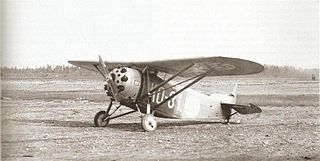
NVI F.K.31 was a Dutch designed parasol wing two seat reconnaissance-fighter, which was developed in the 1920s by Frederick Koolhoven. The aircraft saw some service in the Finnish Air Force.
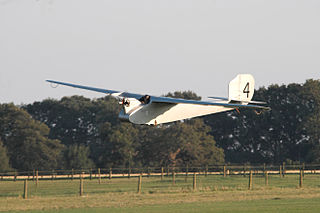
The English Electric Wren was a 1920s British ultralight monoplane built by the English Electric Company Limited at Lytham St Annes, Lancashire.

The BAT F.K.23 Bantam was a British single-seat fighter biplane produced by British Aerial Transport Company Limited of London during World War I.

The BAT F.K.24 Baboon was a British two-seat training biplane produced by British Aerial Transport Company Limited of London during World War I.

The BAT F.K.26 was a British single-engined four-passenger biplane transport aircraft produced by British Aerial Transport Company Limited of London at the end of World War I.
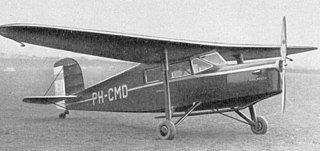
The Koolhoven F.K.43 was a small four-seat, single-engined monoplane passenger aircraft manufactured by Koolhoven in the Netherlands. It was a direct successor of the F.K.41.

The Morane-Borel monoplane was an early French single-engine, single-seat aircraft. It was flown in several European air races.

The Koolhoven F.K.51 was a 1930s Dutch two-seat basic training biplane built by the Koolhoven Company.
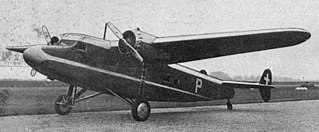
The Koolhoven F.K.50 was a 1930s Dutch eight-passenger light transport monoplane designed and built by Koolhoven.

The Heston JC.6 was a British prototype air observation post aircraft designed and built by the Heston Aircraft Company Limited, who had previously built the Heston Phoenix, the Heston T.1/37 and the Napier-Heston Racer. The JC.6 was also known as the Heston A.2/45 or the Heston AOP.

The Koolhoven F.K.42 was a parasol-wing, two-seat training monoplane manufactured by Koolhoven in the Netherlands. Only one was built.
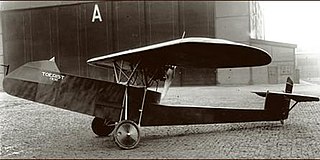
The Koolhoven F.K.30 Toerist was a small sport aircraft built in the Netherlands in 1927, intended for use by aeroclubs. The fuselage carried the pilot and one passenger in tandem in a bathtub-like open cockpit. The cantilever parasol wing was mounted above and behind them, with the main wheels of the fixed undercarriage directly below the wing, at the sides of the fuselage. The engine, driving a pusher propeller, was mounted on the aircraft centerline at the aft portion of the wing. The conventional empennage was carried on a boom extending below the propeller arc. The wing, including engine, was designed so that it could be pivoted 90° while on the ground, allowing the aircraft to be stored and transported more easily.

The Koolhoven F.K.48 was an airliner built in the Netherlands in 1934 for KLM.
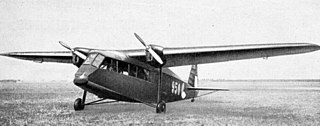
The Koolhoven F.K.49 was a photographic survey aircraft built in the Netherlands in 1935.

The BAT F.K.25 Basilisk was a prototype British fighter aircraft of the First World War. A single engined biplane intended to meet a requirement to replace the Sopwith Snipe, the Basilisk was unsuccessful, only three being built.
The Koolhoven F.K.57 was a twin-engined, gull-winged monoplane built in the Netherlands as a personal transport for the Director General of Royal Dutch Shell. Only one was made, flying chiefly in Europe in the year before World War II, but destroyed when Germany invaded the Netherlands in May 1940.

The BAT F.K.27 was a two-seater sporting biplane designed by Frederick Koolhoven and built by the British Aerial Transport Company Limited (BAT) in 1918.
The Koolhoven F.K.44 was a two-seat, single engine sport monoplane designed and built in the Netherlands in the early 1930s. It was built to order, but only one was completed.

The Koolhoven F.K.54 was a Dutch single-engine, three-seat touring aircraft with a retractable undercarriage. It flew shortly before the start of World War II and its development was abandoned after its first flight as attention turned to military aircraft.

The NVI F.K.35 or Koolhoven F.K.35 was a two-seat fighter aircraft built in the Netherlands during 1926. It was completed and exhibited but, through a combination of ground accident and financial problems, never flown.


















